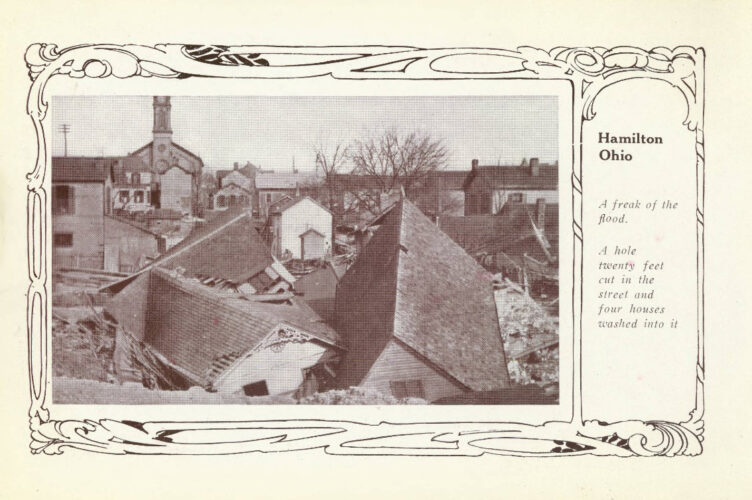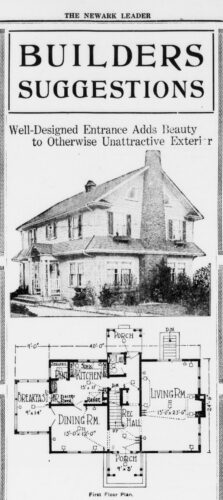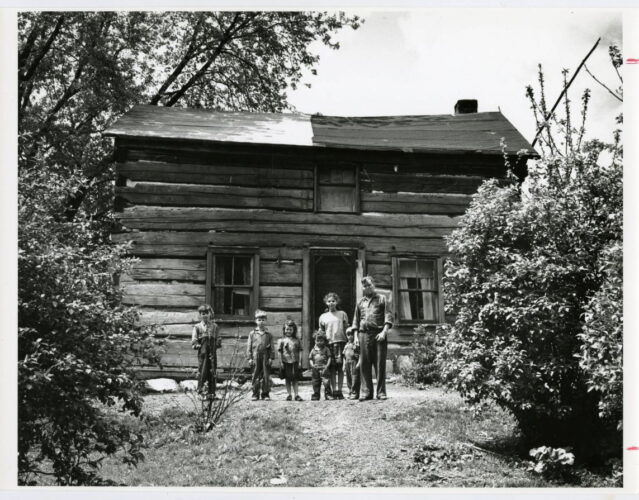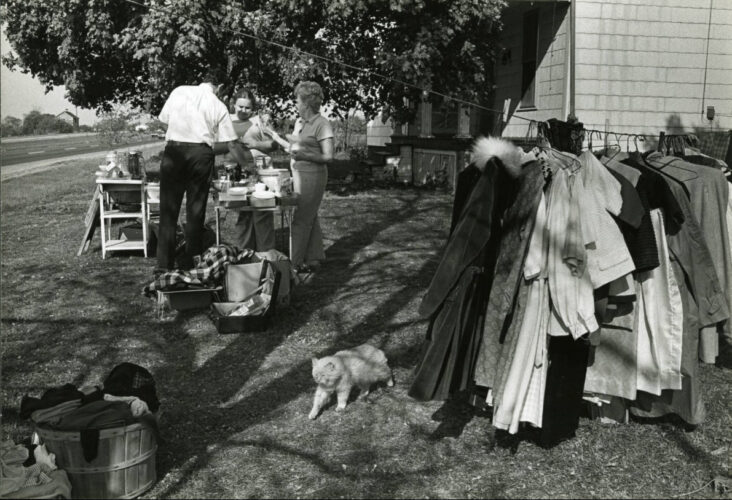No Place Like Home


We’ve got fancy mansion houses, humble everyday houses, apartment buildings, company plat housing projects, Lustron homes, house museums, famous homes, and even a backyard birdhouse. Okay, maybe that last one doesn’t count, but still! Some of my favorites, though tragic, are before-and-after photographs of homes in disasters, like these Schmidt House before and after Xenia Tornado photographs. (See also: floods.)
If you like looking at floor plans and you haven’t already sated your curiosity with architectural drawings, you can even dive into newspapers! The Newark Leader on Chronicling America, for example, has a recurring “Builder’s Suggestion” feature on page 6.
Even with so many homes on display, there are even more–hidden in the background of other images. This family portrait, taken by Joe Munroe in 1946, frames the family of seven in the context of their home. Artistically speaking, the photograph is scaled to the house, not the family. And yet, we don’t mention the house at all in the description–why is that? Like hidden mothers, houses become the backdrop for many photos.
Take this other photograph–a garage sale in South Side Columbus, Ohio. Here, three people talk over a table covered in cookware for sale while a windswept cat takes center stage on the lawn between a bucket of clothes and several coats strung up on a clothesline. Despite taking up nearly a quarter of the image, the house is not mentioned because it likely wasn’t what the picture is about.

‘Aboutness’ is a concept in archival description we use to explain the most relevant parts of an object. Especially in generalist collections like the Ohio Guide Collection, we consider the broader context, and can only describe the top three or so ‘aboutnesses’. For this photograph, we chose: the location (South Side Columbus, in relation to High Street photography), the subject (the cat), and the context (the garage sale). The bottom line: we don’t have the time to research every small detail. And besides, we think it would probably be boring to read about our musings on whether that’s composite shingles or steel siding.
When the focus of a collection gets narrow, like in the Block Card Collection created by the Lucas County Auditor’s Office (provided by the Toledo Lucas County Public Library), we can make room for the specifics. In these house photos, architectural style is frequently noted.
If you’re on a house hunt, hidden or otherwise, here’s some helpful house-y keywords: houses (‘house’ will probably return government materials), housing, apartments, historic homes, residence, plat, block card, cabin, bungalow, mansion, Lustron, Victorian, ranch style, colonial style, revival, home design.
This is all to say, the real reason we have so many houses on Ohio Memory? There’s no place like home!

Thank you to Jen Cabiya, Digital Projects Coordinator at the Ohio History Connection, for this week’s post!



Leave a Reply
You must be logged in to post a comment.